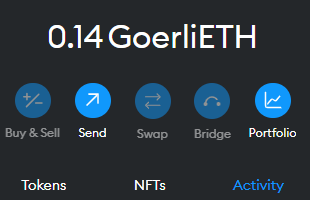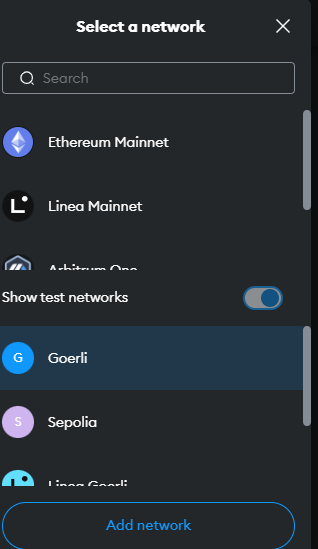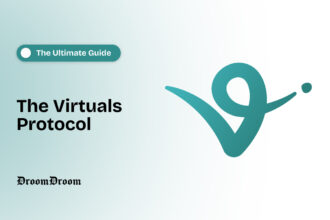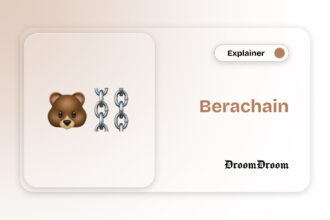Mainnet is the primary network of the blockchain on which all the real world cryptocurrency transactions take place. Every blockchain has just one mainnet which has the same name as the blockchain.
A testnet is a network on which features, dapps, coins, NFTs, etc are tested. These networks are primarily developed to resemble mainnets in as close a way as possible so that all tests can be performed. They are similar to sandboxes used in software development.
Understanding the difference between mainnets and testnets is crucial for everyone because several users have been scammed with payments of testnet ETH which has no monetary value.
What are Mainnets?
Mainnets are the blockchain networks that process and record all the transactions in a blockchain. These transactions are final and represent real world exchange of tokens, NFTs and other data.
Examples of mainnets are Ethereum, Polygon, Shibarium, Solana and Bitcoin.
Any asset on the mainnet whether tokens, NFTs, Dapps, protocols, etc., have real life value and can be exchanged for fiat currency (like USD).
What are Testnets?
Testnets or Test Networks are the scaled down replicas of the main blockchain network. They provide all the features of a mainnet although with reduced security.
Testnets are necessary for blockchain development as they act as a sandbox and also as a prototype to test new blockchain features, dapps, smart contracts, etc., before they are deployed on the mainnet.
The following is a five-point explanation on why testnets are essential in blockchain development.
Why Need a Separate Network for Tests?
Firstly, separate networks allow you to make mistakes without affecting the core blockchain.
When a program is run on the testnet, it lets the developer examine all its features. Any failure in the Dapp or New Feature has zero impact.
Secondly, the tokens that are used for transactions on the testnet are mostly available for free. Any developer can get them for free. I use the following website to get Goerli ETH that is used while developing in the Goerli Testnet of Ethereum.

However, if such failure were to occur on the Mainnet it would have been very costly because of high gas fees and could have a negative impact on other users.
Thirdly, though testnets use the same blockchain architecture as the mainnet, they have very less transaction capability and lack in security as compared to the mainnet.
For example, the mainnet of Ethereum exceeds 1 million in number while for its Goerli testnet the number of validators is just above 1800.
Fourthly, testnets produce blocks faster than mainnets as they do not have to follow a complex validation process. This allows developers to have faster development iterations and not wait to see the results.
Finally, testnets allow onboarding of new developers and help them get access to all the features of the mainnet without allowing them on the mainnet. They can experiment with blockchain elements and features, build up on past developments and deploy new features without the fear of committing a costly mistake.
Difference Between Mainnet and Testnets
Mainnets and testnets have several differences between them which make them distinct in their working, security, and appearance.
- Working
Mainnets follow a complex procedure for block production. These procedures are designed to be fail proof and each transaction in a block is verified multiple times before finalizing it.
- Security
As discussed earlier, testnets have much less validators which make them less secure than mainnets. However, this does not impact testnets as their tokens have no monetary value in real life.
- Appearance
When using a wallet, a mainnet appears with the name of the blockchain which it belongs to. For example, Ethereum’s mainnet appears in a wallet with the name Ethereum.
Testnets appear with their own distinct name. For example, Ethereum’s testnets are Sepolia, Goerli, etc.
Below is how testnets and mainnets appear in MetaMask. Note that all mainnets appear with a suffix “mainnet”. However, this is not seen in other wallets such as Trust, Coinbase, etc.

Mainnets and Testnets in MetaMask Wallet
- Stability
Mainnets are a highly stable environment because they are responsible to carry out transactions that have a real monetary value.
Testnets, on the other hand, have a very dynamic environment that changes more frequently than the mainnet.
- Flexibility
Mainnets are less flexible in accommodating radical changes in the network and can crash if changes are miscalculated. These networks also take a longer time to restore if they crash.
For example in August 2023, Shibarium, the mainnet of Shiba Inu’s blockchain crashed when an unexpected number of users interacted with it. It took nearly a week to restart the network.
Testnets are more flexible in nature and can be restored quickly owing to their smaller size.
Testnet Scams
Several new artists and users have been scammed with payment in Testnet Tokens instead of mainnet tokens. Testnet tokens carry no value and in most cases are available for free.
The scammers who operate these kinds of scams rely on a user’s inability to differentiate between mainnet and testnet. Since new users rarely understand the difference, they become easy targets.
One such scam was seen in Shibarium where scammers were offering testnet SHIB as airdrops. Their motive was to lure users to connect their wallets to the scam protocols which could drain the wallet balance of unsuspecting users.
How to differentiate Mainnets and Testnets?
Mainnets and testnets are very similar to each other in architecture and are difficult to identify for new users. However, there are distinct features that tell the difference between them.
- Firstly, mainnets carry the name of their blockchain while testnets have distinct names.
The difference between mainnet and testnet.(link to other section in the same article)
- Mainnet transactions can be tracked with blockchain explorers while testnet scams cannot be tracked.
- Several tokens have prefixes or suffixes added to their testnet tokens. However, this difference is not present in Ethereum.
- Testnet addresses appear different from mainnet. For example, in Bitcoin, the mainnet starts with a number while testnet addresses start with a “m” or “n”.
Conclusion
Mainnets and testnets are made identical but serve different purposes. Mainnets carry real value, are more secure and stable while testnets lack all of these.
Yet, several scammers have exploited their similarities to scam unsuspecting users. To prevent such cases, it is essential that users learn to identify their differences.

















![How to Buy BCUT [bitsCrunch] token? 27 Buy BCUT](https://droomdroom.com/wp-content/uploads/2024/02/Buy-BCUT-330x220.jpg)


